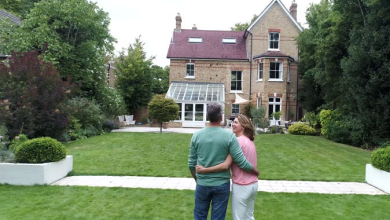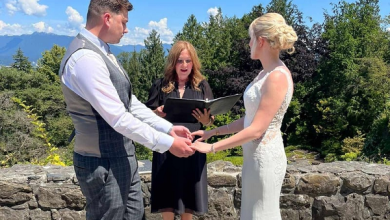Steps To Apply and Get a UK Marriage Visa – Live in UK
The UK Marriage Visa, also known as the UK Spouse Visa, allows non-UK residents to join their spouse or partner in the UK, provided one partner is a British citizen, an individual holding settled status or someone granted refugee status.
Applying for a UK Marriage Visa can be a straightforward process if you understand the requirements and the necessary steps. This guide will provide detailed information on the application process, eligibility criteria, required documents, and other essential aspects to help you navigate the process effectively.
Understanding the UK Marriage Visa
The UK Spouse Visa is designed for those married to or in a civil partnership with a British citizen, a person with indefinite leave to remain (ILR), settled status, or refugee status in the UK. This visa allows the holder to live, work, and study in the UK without restrictions and is often a pathway to permanent residency (ILR) and British citizenship.
The visa is typically granted for 30 months (if applied for within the UK) or 33 months (if applied for outside the UK). It can be extended, and after five years, holders may apply for ILR.
Step 1: Check Eligibility
Make sure you meet the eligibility criteria before submitting your application. Both the applicant and their sponsor (the spouse or partner already in the UK) need to fulfill specific requirements:
Relationship Requirements
The applicant must prove they are in a genuine and subsisting relationship with their UK-based spouse or partner. Evidence such as marriage or civil partnership certificates, photographs, travel records, and communication history may be required.
Financial Requirements
The UK sponsor must demonstrate an annual income of at least £18,600 or show sufficient savings if their income falls short. If there are dependent children, the financial threshold increases. This requirement can be met through employment, self-employment, pensions, or other lawful income sources.
Accommodation Requirements
The couple must secure adequate housing in the UK. This includes demonstrating that the living arrangement complies with UK housing standards and that the applicant will have their own space.
English Language Requirements
The applicant must prove their English proficiency by passing an approved English language test or having a qualification taught in English. Nationals from certain English-speaking countries are exempt.
Step 2: Prepare Your Documentation
Gathering the required documents is one of the most critical parts of the application process. Incomplete or missing documents may result in delays or denial.
Key Documents to Provide:
- Proof of Relationship: Marriage certificate, photos, joint travel records, and other evidence of a committed relationship.
- Proof of Financial Means: Bank statements, payslips, tax returns, and employment contracts of the sponsor.
- Proof of Accommodation: Lease agreement, property ownership documents, or a letter from a landlord.
- English Language Certificate: Evidence of passing an approved test or an English-taught qualification.
- Passport and Travel History: Valid passport of the applicant and proof of prior travels, including any visas.
- Sponsor’s Immigration Status: Documentation of the UK sponsor’s residency or citizenship.
Any documents in a foreign language must be translated into English.
Step 3: Submit Your Application
Applications for a UK Marriage Visa can be made either from outside or within the UK. The application process varies slightly depending on your location.
Applying from Outside the UK
If you are outside the UK, you need to apply online through the UK Visas and Immigration (UKVI) website. After completing the application form, you will pay the application fee and book a biometric appointment at a local visa application center.
Applying from Within the UK
If you are already in the UK on a visa that allows you to switch to a Spouse Visa, you can apply online, pay the fee, and Schedule a biometric appointment at a UK Visa and Citizenship Application Services (UKVCAS) centre.
Step 4: Attend a Biometric Appointment
At the biometric appointment, your fingerprints and photograph will be taken, and you may need to submit additional documents. This step is essential for identity verification and processing your application.
Step 5: Wait for a Decision
After submitting your application, you will need to wait for a decision. Processing times can vary:
- Applications made outside the UK typically take up to 12 weeks.
- Applications made within the UK usually take 8 weeks.
If your application is urgent, you can sometimes pay for a priority or super-priority service for faster processing.
Step 6: Receive Your Visa and Enter the UK
If your application is successful, you will receive a vignette sticker in your passport, valid for 30 days. You must enter the UK during this period and collect your Biometric Residence Permit (BRP) within 10 days of arrival from a designated location.
Post-Visa Requirements
Once in the UK, you are allowed to work, study, and travel freely. However, you must meet specific conditions to remain compliant:
- Extending Your Visa: Before the visa expires, apply for an extension to stay legally in the UK.
- Applying for ILR: After five years on a Spouse Visa, you can apply for ILR, provided you meet residency and relationship requirements.
- Pathway to Citizenship: Once you have ILR, you may apply for British citizenship after an additional year, subject to eligibility.
Common Challenges and Tips
Overcoming Financial Hurdles
If the sponsor cannot meet the income requirement, explore other options, such as showing sufficient savings (a minimum of £62,500) or combining income sources.
Ensuring Accurate Documentation
Double-check that all documents are current, complete, and translated into English. Incomplete or inaccurate documentation often leads to visa rejections.
Seeking Professional Advice
For complex cases, such as those involving dependents or prior visa refusals, consult an immigration lawyer or adviser to increase your chances of success.



